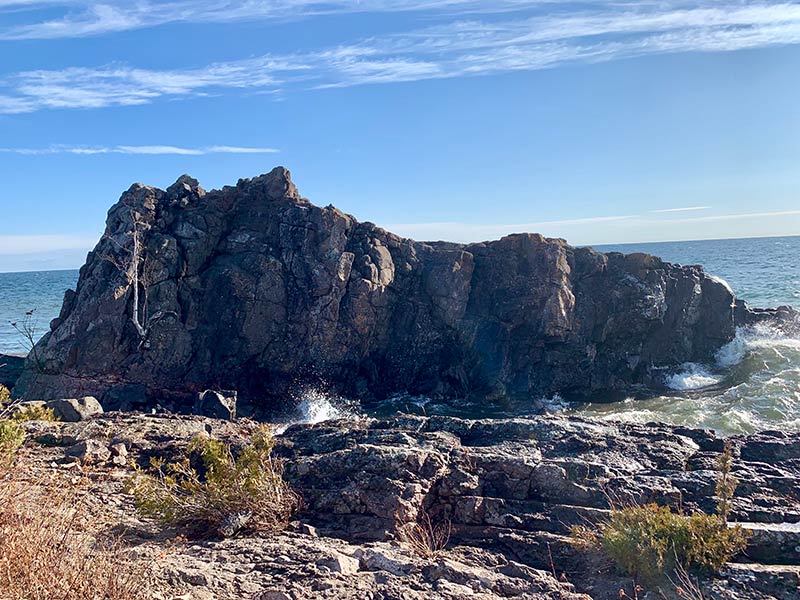
By Ada Igoe, Contributor
An unobtrusive parking lot belonging to Sugarloaf Cove sits on the lake side of Highway 61 just after crossing the Cook County line. Though you can’t tell as you zoom by at 55 mph, this site is much more than the interpretative signs visible from the road. Step off into the forest beyond and you’ll find a one-mile nature trail, a nature center, a DNR Scientific and Natural Area (SNA), and a beautiful stretch of undeveloped Lake Superior shoreline.
How a nonprofit came to own this land is a long complicated story involving land swaps and citizen intervention that starts with Consolidated Papers Inc. purchasing the land in 1943. They used it to raft lumber harvested on the north shore across Lake Superior to Ashland, WI, said Molly Thompson, Sugarloaf’s executive director. Consolidated ceased rafting at the site in 1971 and eventually donated the land to The Nature Conservancy. By 1988, the property belonged to the MN DNR, and the story might have ended there if the DNR hadn’t proposed using the site to build a safe harbor in the early 1990s. Area landowners – including former MN Governor Elmer Andersen and others who wanted to see the cove protected from development – protested the harbor proposal. In 1993 they settled the property into its current model of nonprofit management.
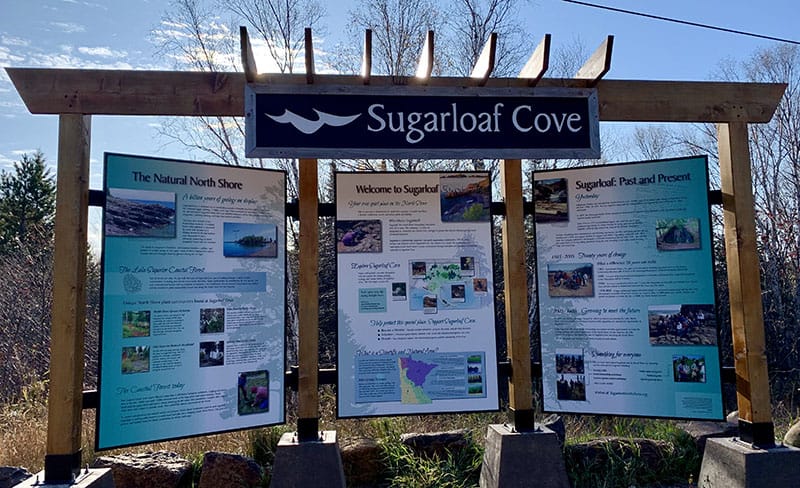
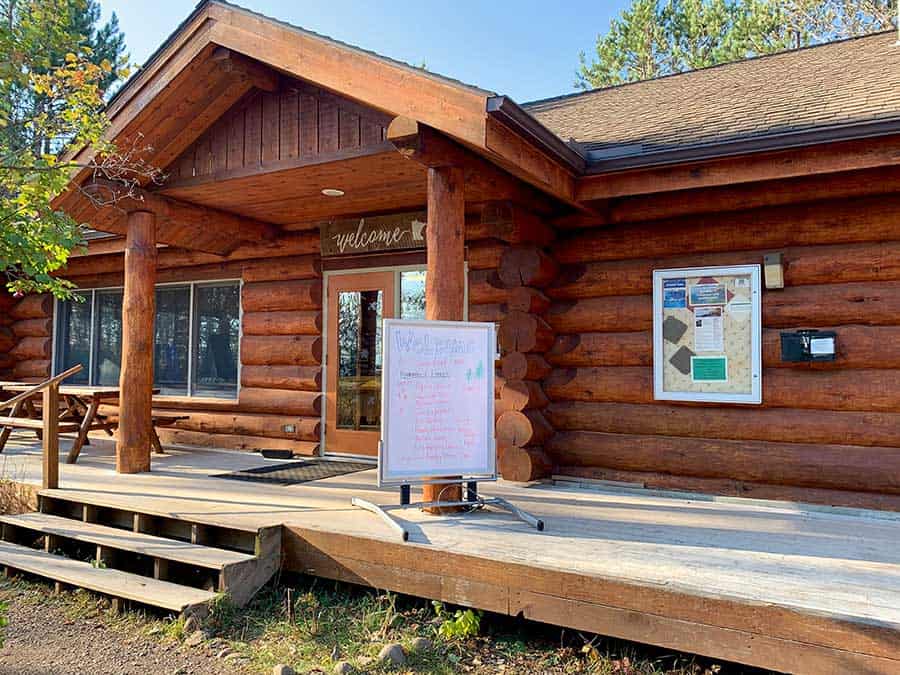
Geology worth preserving
This quiet cove, with its curving beach and a rocky spit of land attached to the beach by a tombolo – a gravel bar created by wave action that connects two pieces of land – first began to gain notoriety as a special natural area along Minnesota’s North Shore when Dr. John Green, now Professor Emeritus of Geology at the University of Minnesota-Duluth, visited Sugarloaf while mapping North Shore geology in the 1960s. The land has been called “Sugarloaf” since at least 1878, the name refers to the 19th century practice of selling sugar in large cones called sugar loaves that were then chipped away at as people used the sugar in their baking. When you look at the craggy points of Sugarloaf Point, you can see why settlers were reminded of a half-used “sugar loaf.”
Because of the site’s beauty and geological significance, Green nominated Sugarloaf for DNR designation as an SNA in 1987, writing, “The bedrock here is an excellent example of basalt lava flows from the Precambrian age, when the Midcontinent Rift almost split North America apart about 1.1 billion years ago. These lavas, which make up the most of the Minnesota shore, are known as the North Shore Volcanic Group. On the point, wave action on the tilted lavas has produced excellent exposures of the surface and internal lava features of each successive flow.”
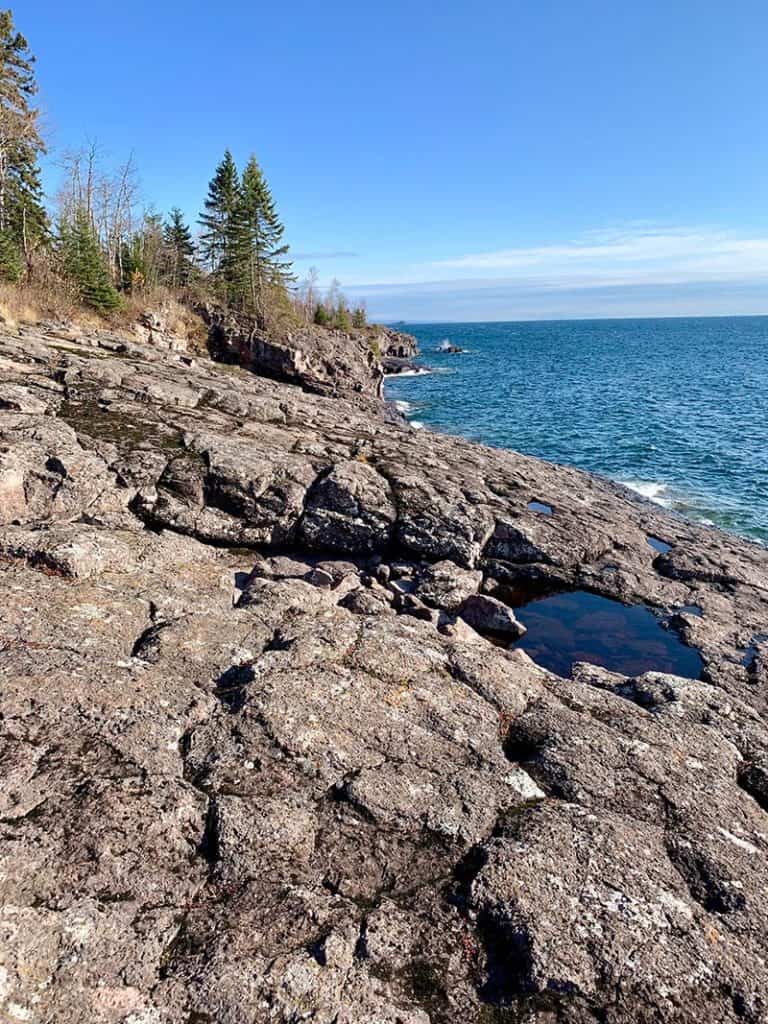
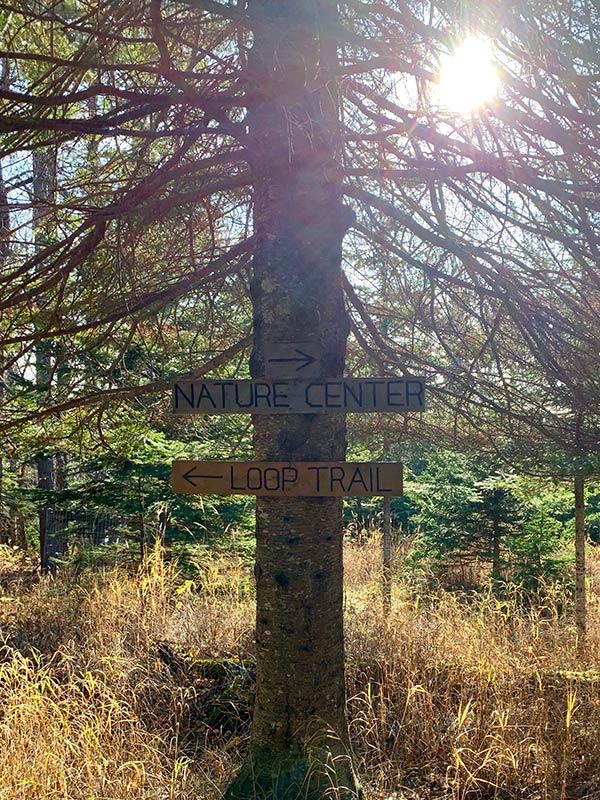
Today, Sugarloaf features an easy one-mile hike through woods and along Lake Superior shoreline, a nature center which offers a variety of programs throughout the summer months including Saturday guest speakers and geology walks with Sugarloaf’s naturalist, Margie Menzies. Sugarloaf employs a seasonal site host and depends on volunteers to help with visitor contact at the nature center as well as trail and property maintenance.
The vast majority of Sugarloaf visitors are people who decide to stop on a whim as they’re driving past, said Thompson. Signs discussing both the natural and human history of the site were installed this summer at various points of interest along the nature trail and help visitors deepen their understanding and appreciation of the site, even when the visitor center isn’t open. Thanks to the installation of two pedestrian counters in 2018, Sugarloaf now knows the site averages about 95 visitors a day between Memorial Day and Labor Day weekends.
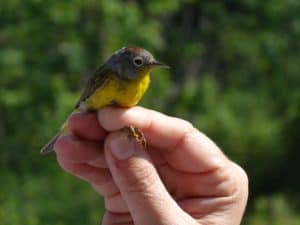
Rare plants and migrating bird study
This summer, a DNR plant and lichen survey of Sugarloaf Cove revealed that Sugarloaf is one of only two known places in North America where the Arthrorhaphis grisea lichen is known to grow. According to Molly Thompson, Sugarloaf will be working to create infrastructure such as ropes or boardwalks to help protect the point’s unique plants and lichens, which is especially important as half of visitors hike out to the point.
Education and restoration are the heart of Sugarloaf’s mission. The site is one of 1,200 MAPS (Monitoring Avian Productivity and Survivorship) sites around North America– a bird banding program that collects data to help scientists better understand bird behavior, migration, and longevity. Since 2012, naturalist Margie Menzies has held a weekly public bird banding event during the summer season. During these events, she catches songbirds in fine mesh nets on the property, records their data, and gives them each a numbered leg-band before releasing them, unharmed, back into the wild.
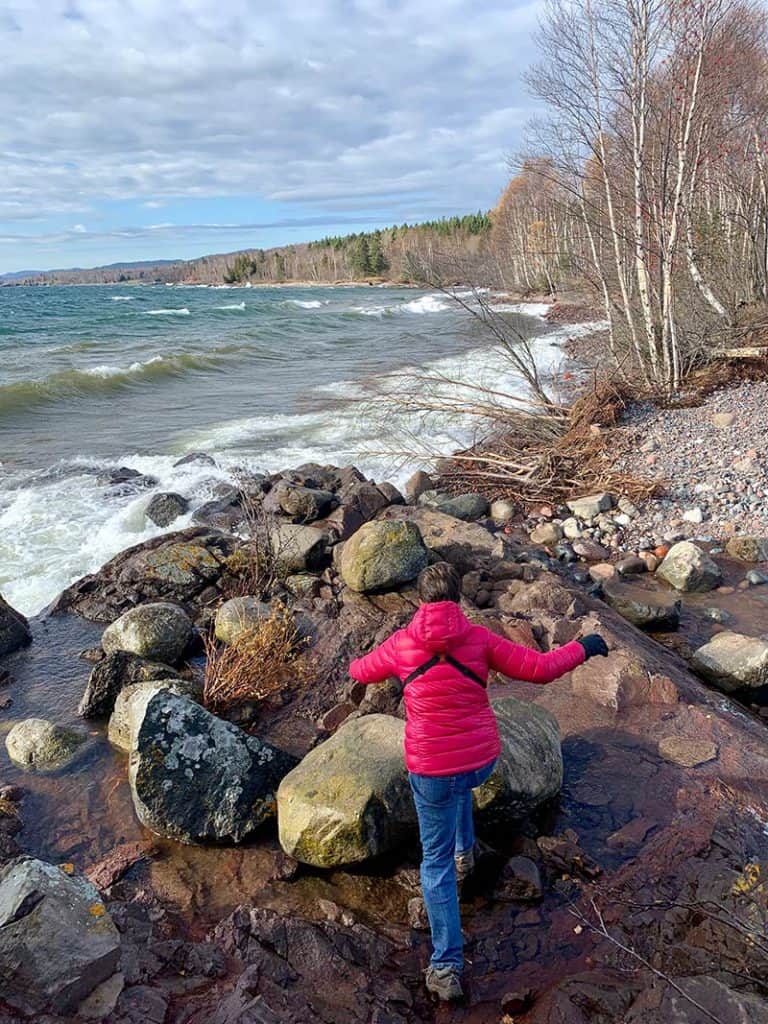
But Sugarloaf is much more than a location for hands-on, scientific learning, said Thompson. “We’re more than just the site,” she said.
As part of the North Shore Forest Collaborative, Sugarloaf works with local, state, and federal agencies to help preserve and restore the forest along the North Shore, mostly by educating Lake Superior shoreline landowners on best practices for maintaining their property’s forest. Among the Collaborative’s initiatives has been providing landowners with fences to protect their young trees from deer damage and providing education about invasive species eradication.
Sugarloaf has also worked with the University of Minnesota Extension to offer both Master Naturalist and Lost Forest/Master Woodland Owner courses to North Shore residents at the Sugarloaf Nature Center.
You never know what might be happening at Sugarloaf, but whatever it is, it will be hands-on and focused on forest preservation.
Explore Minnesota: Sugarloaf Cove SNA
North Shore Forest Collaborative

